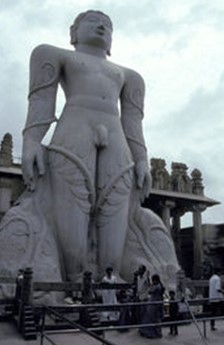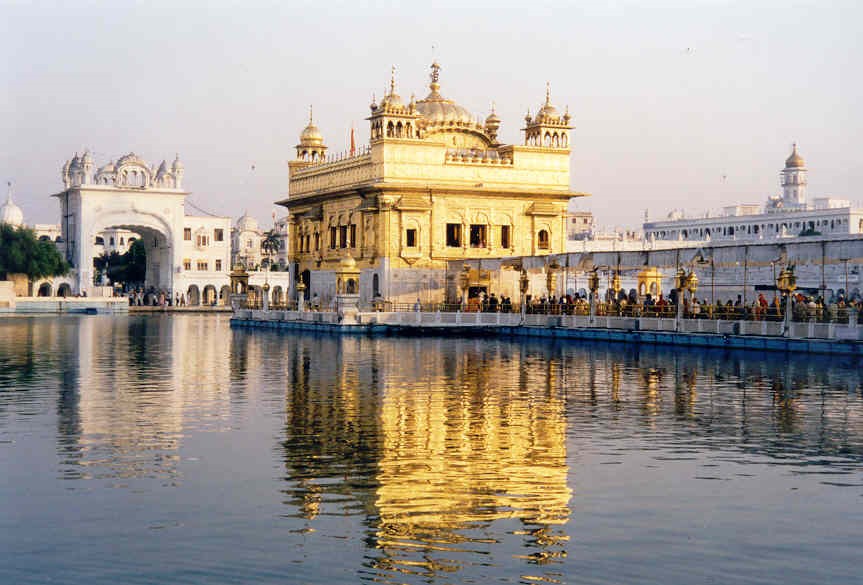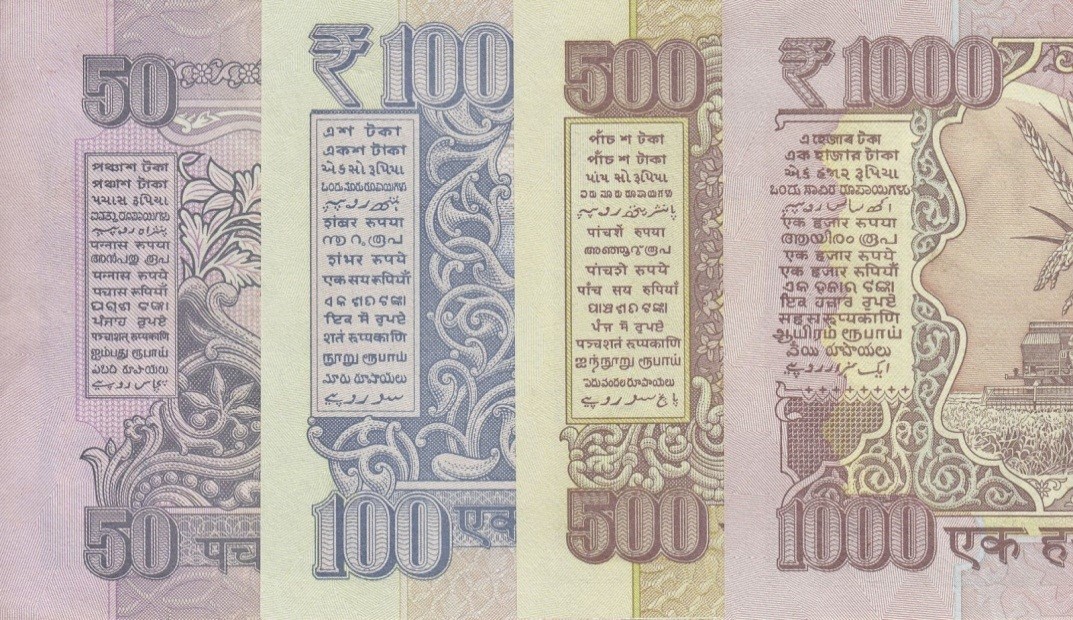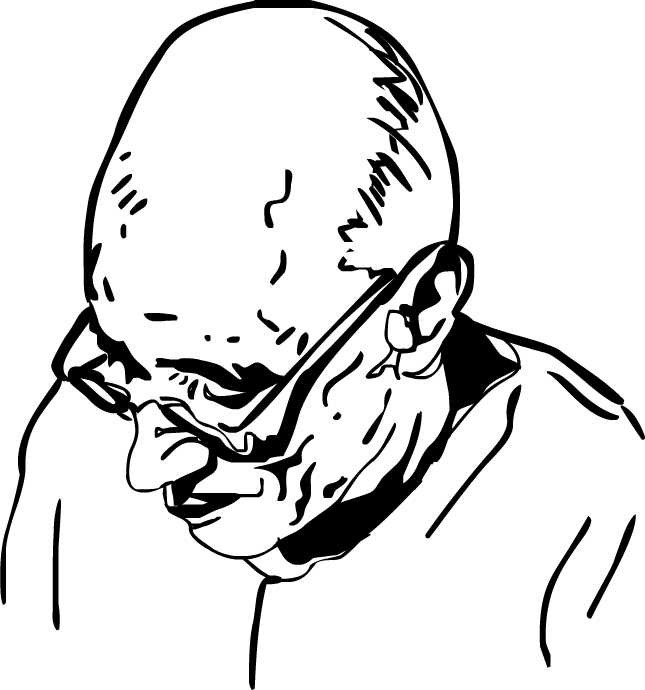Cultural Interactions and Change
By Choodamani Nandagopal
Summary:
People from different cultures have been coming to India even before the Christian era including Greeks. Because of the contact with other cultures our culture has gone through cultural interaction. Such contacts took place due to trade, invasion, or expedition. The cultural interaction took place when pilgrims and travellers visited distant lands, artists and artisans moved from place to place. Further, migration of people in search of work and establishment of settlements also resulted in cultural interaction. During the middle ages, Mongolians, Arabs and Parsis (the Zoroastrians) entered from different directions and made India their home. This resulted in people carrying their ideas and customs to the places they travelled or migrated and learning about the practices of people in that place. In this manner, we created new cultural expressions, which was open to change.
Abstract
We have seen in the introduction part of this section that Indian culture evolved through centuries and is the integral part of our endeavour. By going through this write up on the cultural interaction and change you appreciate the interdependence of several aspects of human life through which one develops himself as a cultured person, also study the changes occurred time to time during historical period and despite the changes and setbacks Indian society developed the power of sustainability because of the strong roots sprouted through the cultural expression.
One of the most interesting elements of Indian culture is the compositeness, and its nature of plurality associated with its diverse streams. Having known the cross-cultural interactions and its effect on Indian culture and the way Indian culture achieved its significant position in the world, it is here we see the sentiments and values of Indian culture are very deep rooted with a strong background. In spite of many invasions and changing political conditions Indian culture retained certain inherent values. These values are significant not only to India but to the entire humanity.
What is now being called the global consciousness covering the entire world was the very foundation of Indian culture in the concept of sarvejanaha sukhinobhavantu, all kinds of people live with happiness. From Indian context, culture is an important expression which shows us how we unite despite our diversities. We learnt the basic characteristics of our culture, like respecting elders, respecting other religious beliefs, living in co-existence, and not to harm the natural elements. Indian culture teaches how to bear with differences and live in harmony. Social harmony was advocated by the saints of India by reaching the common people through their lyrical compositions, singing, dancing and uniting through cultural expression.
Cultural Interactions and Change
People from different cultures have been coming to India even before the Christian era. Because of the contact with other cultures, our culture has gone through cultural interaction. Such contacts took place due to trade, invasion, or expedition. The cultural interaction took place when pilgrims and travellers visited distant lands, artists and artisans moved from place to place. Further, migration of people in search of work and establishment of settlements also resulted in cultural interaction. This resulted in people carrying their ideas and customs to the places they travelled or migrated and learning about the practices of people in that place. In this manner, we created new cultural expressions, which was open to change.
If you look at the current food tradition and dress tradition of India today, it has undergone much change. If we observe what we eat today, it is a mix of traditional dishes and the trendy ones like Pizza, Pasta, Noodles, Burgers, Ice-cream etc. At the same time, people in other countries like USA, UK and Middle East have developed a taste for Indian cuisine such as dosa, curries, kababs and Indian sweetmeats. Even the dresses that people wear in Indian cities have had great western influence.
The effects of technology have brought many changes in our day-to-day life. Even the remote villages in India today have television, mobile and telephone, and internet connectivity. In this way, people were connected and altered the socio-cultural life of our people.
It is in this manner that the Indian culture evolved, the glory of Indian cultural traditions and cultural changes taking place from time to time. Now, we will explore the nature of Indian culture, its uniqueness in accommodating a sense of plurality within it. This is reflected in the fact that India shows cultural unity in diversity. This means to say that we follow many religions, we belong to many castes, we speak many languages, and we cook different varieties of food, we worship number of gods, and we dress in various ways in one country without hating each other and respecting every one’s belief and thoughts. These differences can be seen, felt, experienced and tasted and understand that we are truly a unique country with a unique culture. What are the characteristics that unite Indians under one umbrella?
Nature of Indian culture
In the Indian tradition, the prayer is not for the happiness of mankind alone. In India, prayer has a greater purpose than mere removal of distress. In some prayers, it asks for total peace of the beings, in others, it is pure expression of love and devotion to the divine and in yet others, it refers to calm the senses and control the mind, remove the evil and to purify.
Ancient India was a land of wisdom. All branches of knowledge developed in India and in many fields we had excelled and were much ahead of the western society. ‘Illumined knowledge possessing the higher and renouncing the lower’ was a much revered thought, which in the present times means ‘simple living and high thinking’.
In Indian culture, ‘dharma’ which refers to the moral law combined with spiritual discipline that guides one’s life, has higher goals. It is not the simple English translation of religion. It is not imposed but naturally and voluntarily followed. The closer meaning of ‘dharma’ is righteousness. One has to develop a natural behaviour and functions of righteousness. In that sense ‘sanatana’ – ‘the ever prevailing’ is the correct word than the narrow usage of the term ‘Hindu’. Dharma was upheld in Vedic, Buddhist, and Jaina paths. As the symbol of respecting
dharma the ‘dharmachakra’ of Asoka appears on our national flag as illustrated in Fig 1. Evil do not last long as we believe in truth, which ultimately prevails. We will discuss some more features in detail under the characteristics of Indian culture.
Plurality in Indian Culture
Plurality refers to doing things in two or three or more number of ways. Pluralism is an established feature of life in India and plays an important role in our culture. Be it the Ajanta caves, the Kashi temple, the Taj Mahal, Gommatesvara of Shravanabelagola in Fig 2 in Karnataka or Golden Temple of Amritsar as in Fig 3, we exhibit the same intense pride. Though they represent different faiths there is a sense of emotional experience of being Indian in all these. This explains the plurality of faiths.
In the past, in India kshetra (region) and desa (nation) represented two different identities in the sense of plurality. But their relationship is one and the same.
In the same manner, India is known for the diversification in language too. With respect to various languages of India, there is no single language that was looked upon as superior compared with the other languages. But Sanskrit is regarded as the classical language and all ancient scriptures are written in Sanskrit. It is also one of the language the students opt in higher secondary school levels.
Many local, regional, national and international languages are spoken and learnt by Indians. We have the willingness to learn many languages. Indian culture promotes the learning abilities of several streams at the same time and does not disregard any other. Indian school going children study three languages under the three language formula policy of our education. Firstly, it is the local or regional language, secondly the national language, which is Hindi and thirdly, the international language namely English. 15 Languages of India are found printed on every Indian currency as shown in the Fig 4.
And when it comes to worshipping gods and goddesses, we do not follow the policy of worshipping one god throughout India or follow one religion with one or two sects. Every community, every caste has different gods, which they worship and customs which they follow. Thus you will see that in India, despite the differences, in many respects, the people of India believe in the policy of co-existence.
Even politically, India was never ruled by one royal power historically except in times of Asoka or under the British. Several royal families were ruling different territories at the same time. All of them ruled in their territories and were always looking for an opportunity to overpower the other. The stronger ones succeeded and the weaker ones lost in these battles. For example, when Mughals were ruling in north India, the Vijayanagar rulers in south India and the Bahamani rulers in parts of the Deccan (Peninsular India) and Central India, all these three powerful royal lines were ruling their territories at the same time. Similarly, in many respects plurality exists in almost all aspects of life in the sense of co-existence and not one of confrontation. Even today, Indian Democracy is unique for its multi-political party system. Thus, the Indian Society has seen and has been seen as different types of political powers and systems for more than 2000 years of its history and cultural development.
Characteristics of Indian Culture
Good governance has always been unique to Indian culture. It has been essential pre-requisite for the happiness of people. That is why prayers were offered to invoke auspicious time, when the rulers took over the throne of their own or defeated kingdoms of others. Be it so that the rulers bestow happiness and prosperity on people, these prayers were invoked for good governance of the kings so that they always tread the path of righteousness while governing the state.
Ahimsa – Non-violence was upheld in Jainism and Buddhism and in Modern India by Mahatma Gandhi illustrated in Fig 5. Mahatma Gandhi championed the cause of ahimsa by sending the British away without war and bloodshed and got independence to India.
The story-line, contents, characters, the messages, and the lessons that we understand from our epics like Ramayana and Mahabharata are not confined to one geographical area. It is for every Indian and is applicable to any time and space. These two epics stand as great examples to draw the inspiration from time to time. They have a great impact on the thought process of Indians. It is from all such experiences and ideals that a common outlook towards life has developed.
Another perennial value that the Indian culture has inculcated is the spirit of universal relationship. Man is not alone and does not live in isolation. He is related to the entire world through a very strong bondage. What is now being called global consciousness covering the entire world was the very foundation of Indian culture in the concept of sarvejanaha sukhinobhavantu.
Unity in diversity – Composite nature of Indian Culture
Pandit Jawaharlal Nehru illustrated in Fig 6, the first Prime Minister of Independent India said, ‘a country with a long cultural background and common outlook on life develops a spirit that is peculiar to it and that is impressed on all its children, however, much they may differ among themselves’. By the reference of all the above it is very clear and also an accepted fact that India is a land of diversity. Basically, the nature of Indian culture is made of many layers. We cannot think of a single system in our social life. It is this diversity that keeps us knitted together, which helps us observe and imbibe from other sects and enrich our own. Let us feel proud in our diversity and co-existence.
India’s unity is based on our diversity, on our multi-language, religious and traditional co-existence. Indian nationalism is not based on language, geography or ethnicity but on an idea of the land and all the above mentioned features to which we belong. Pandit Nehru expressed the concept of unity in diversity in these beautiful words, ‘Though outwardly there was diversity and infinite variety among our people everywhere there was that tremendous impress of oneness, which had held all of us together for ages past, whatever political fate or misfortune had befallen us. The unity of India was no longer merely an intellectual conception but emotional experience’. Thus, our unity is the unity of heart and mind which inspires us to work together. This experience is the true foundation of Indian culture. This foundation has ever remained intact here and over that foundation new additions and alterations have been made and still being made as new cultures come and affect us.
This kind of unified outlook in diversity has given an image to Indian culture as ‘composite culture’. Composite refers to the admixture of many things. In the sense of culture it means a long standing, integrated diversified traditions, values and customs that have been created and evolved over several centuries. Every time when it comes into contact with any other culture, certain elements of new culture is integrated with the existing one. For example, for over 3000 years, the Vedic culture forms the foundation for Indian culture. The Vedic verses are chanted in oral form and they are revered by the people even in present times. So we find the old, new and modern are all integral part of the composite Indian culture. Indian culture stands as a grand example of composite culture in the world.
Science and Technology, the measurable standards of culture:
Science and technology also have evolved as part of Indian culture, which is felt and observed in the use of metals, building of forts, palaces, and temples, building of tanks and cities. Metal craft, jewellery, bead making, boat making, ceramics and implements speak about the use of different metals and the progressive ways in which materials were used.
The Food Culture:
The food and dishes prepared in India are based on the availability of the resources found naturally in different seasons and different places. The food is of good quality when they are prepared with natural contents and resources. The materials used in cooking are given importance along with their medicinal benefits. Tinned food is still not preferred in traditional Indian preparations. In temples and Gurdvara, the temples of Sikh community traditional food offerings are made as tasty dishes. Each region has its own delicacies in food preparations, and they taste distinctly, may be Gujarathi food, Punjabi, North Indian or South Indian food systems and the Bengali food preparations. The satvic food, which is regarded as the vegetarian food is widely preferred by most Indians. Jain food is increasingly becoming popular worldwide.
India is an agricultural society; happiness of the people is linked with the well-being of the cattle, the rains and the harvests. For the happiness of all living beings including that of plants and animals, the pancha mahabhutas, the five primordial elements such as Prthvi – the earth, Akasha – the sky, jala– water, Vayu – air and Agni – fire are propitiated and respected. Through the functioning of these elements the life of every kind survives. In our culture these elements are worshipped in rituals, pilgrimages, and festivals and respected in everyday life. Knowing the significance and symbolism of the five elements, many customs and traditions have developed over the centuries respecting these five primordial elements which sustain every life on the earth.
 Indian contribution to world culture and thought is recognised in many ways. Indian trade and communication has a long and rich past as it is vibrant today. The Nalanda in Fig 8, Takshila and Vikramashila were the ancient universities of India, where the international students obtained highest educational achievements through the ancient knowledge sources. The disciplines taught included theology, astronomy, philosophy, linguistics, logic, metaphysics, medicine and grammar. These universities flourished from 6th century BC to 12th Century AC. The famous philosopher and economist of India, Chanakya of early 3rd century BC was from the Takshila and Vikramashila Universities. His work on Arthashastra is the earliest treatise on Economics and polity. Similarly, Bharata’s Natyashastra is the earliest treatise on art and aesthetics.
Indian contribution to world culture and thought is recognised in many ways. Indian trade and communication has a long and rich past as it is vibrant today. The Nalanda in Fig 8, Takshila and Vikramashila were the ancient universities of India, where the international students obtained highest educational achievements through the ancient knowledge sources. The disciplines taught included theology, astronomy, philosophy, linguistics, logic, metaphysics, medicine and grammar. These universities flourished from 6th century BC to 12th Century AC. The famous philosopher and economist of India, Chanakya of early 3rd century BC was from the Takshila and Vikramashila Universities. His work on Arthashastra is the earliest treatise on Economics and polity. Similarly, Bharata’s Natyashastra is the earliest treatise on art and aesthetics.
The diffusion of India’s cultural immensity over the vast expanses od Asia and other continents is a glorious epic achievement in the domain of universal thought. Indian culture spread through Siberia in Russia to Mangolia, China, Korea, Japan, Vietnam, Burma, Nepal, Bhutan, Afghanisthan, Cambodia, Thailand, Malasia, Indonesia, Sri Lanka. Mangolia is one of the richest treasures of translations of thousands of Sanskrit works and rare icons of Indian divinities. So also in all these regions mentioned, Sanskrit and Prakrit were wide spread and the culture and thought of these countries are imbued with the Indian spirituality and the content. The art and culture of Thailand is greatly influenced by the epic Ramayana, as one of the supreme expression, the royal court procedure is governed by the Shaiva ceremonies. The living presence of Hinduism is experienced in Bali, the Indonesian island and the Shiva Temple at Prambanam exhibits the dynamics of the extension of Indian culture beyond the present frontiers. Indian interactions with the far and wide regions give a grand picture of the spectrum of Indian culture that stands as the ageless symbols of India’s contribution to the world.
Further Reading:
• India’s Contribution to world Thought and Culture, Vivekananda Kendra Prakashan, Chennai 2003, II Edition.
• Foundations of Indian Culture by Aurobindo
• An introduction to cultural studies by Pramod nayar
• Culture, socialization and human development by Ed. T.S. Saraswathi
• India’s Culture The State, Arts and beyond by Balmiki Prasad Singh
• Hind Swaraj by M. K.Gandhi
• My Autobiography by Jawaharlal Nehru
• India, People and Culture – Bharatiya Vidya Bhavan series










